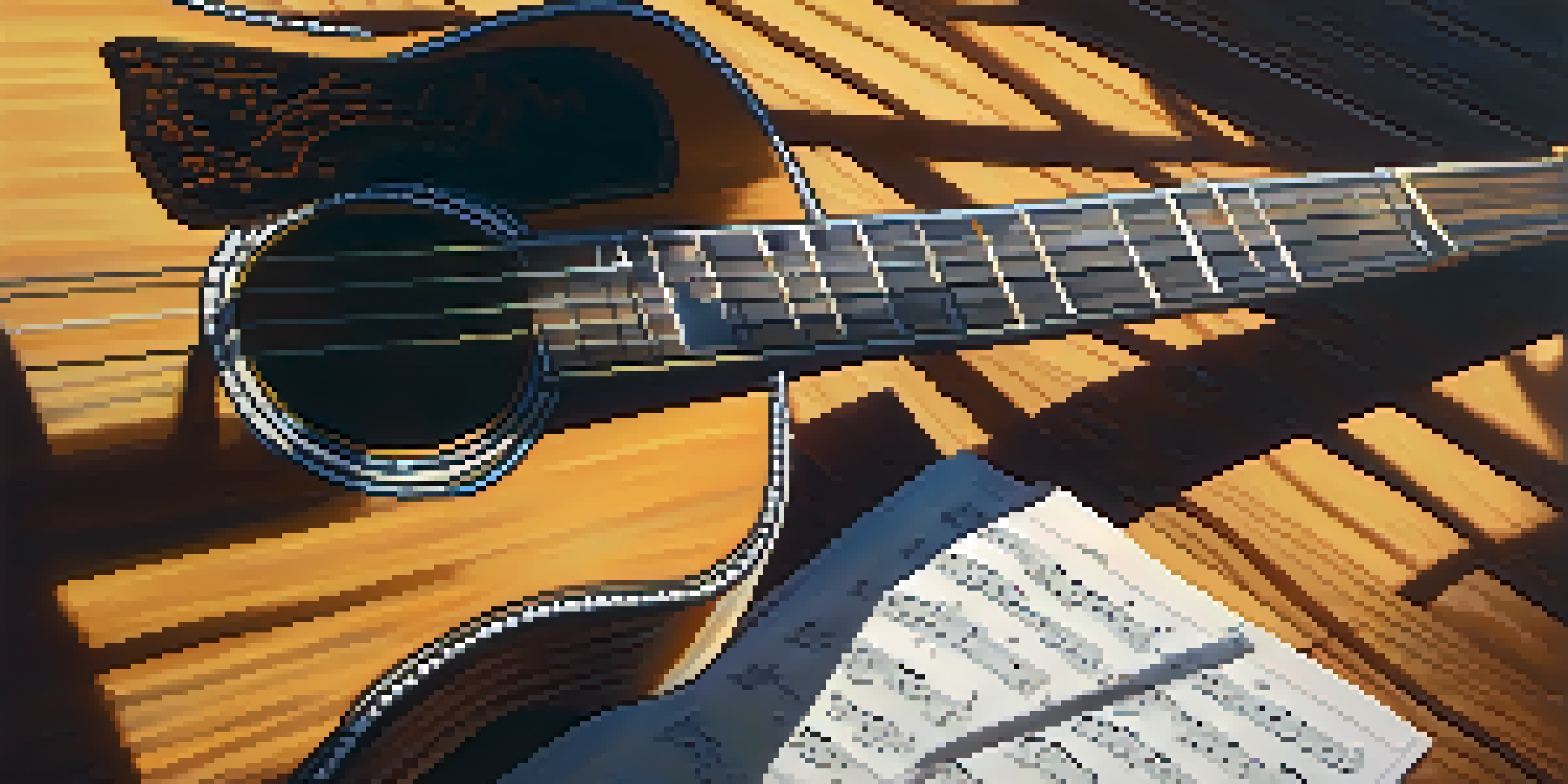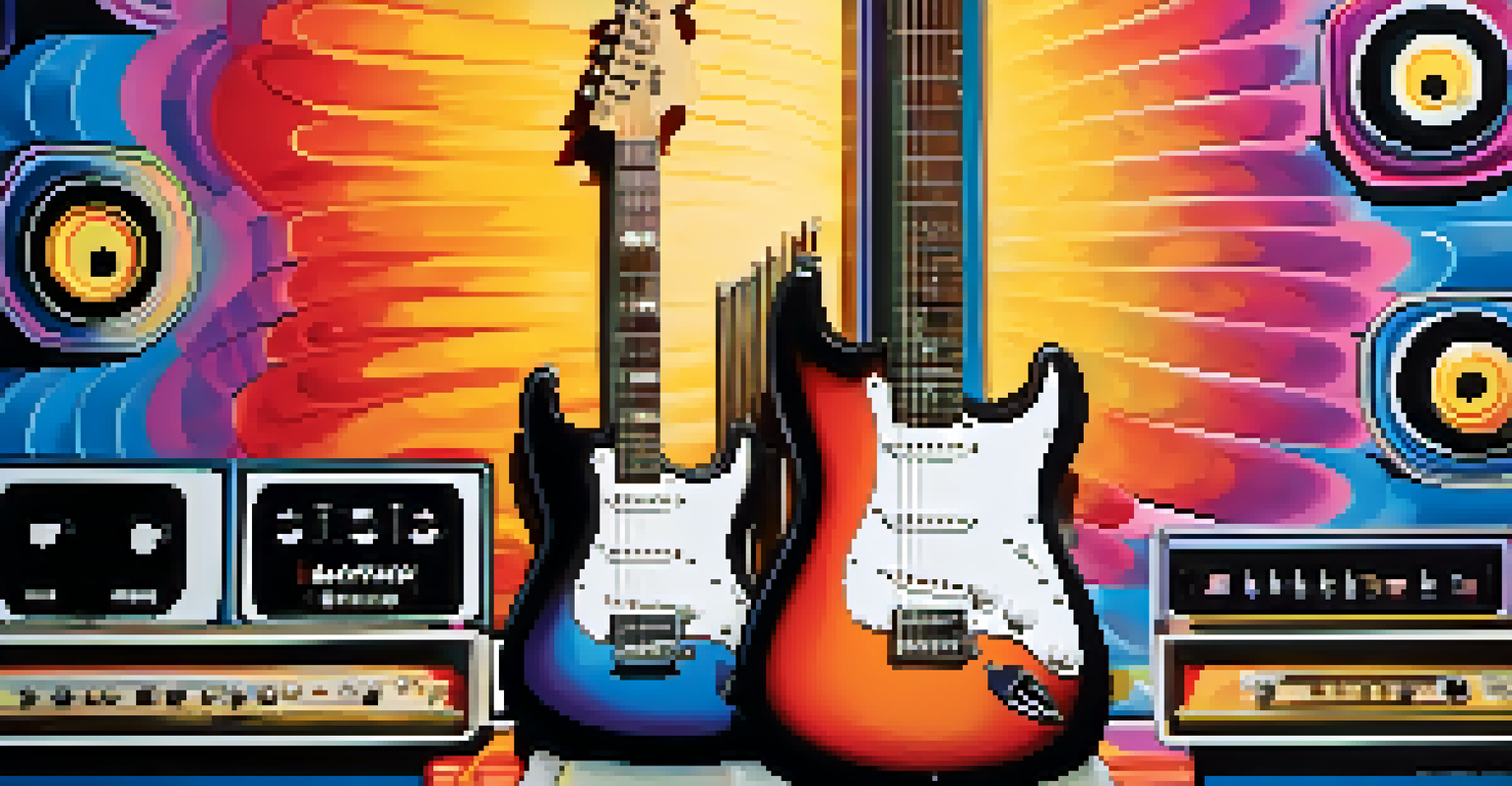Instrumentation: The Key Differences in Acoustic vs. Electric

Understanding Acoustic Instruments: A Natural Sound
Acoustic instruments produce sound through natural vibrations. For example, when you strum a guitar, the strings vibrate, creating sound that resonates in the body of the instrument. This natural amplification gives acoustic instruments their rich and organic tone, making them ideal for genres like folk and classical music.
Music can change the world because it can change people.
Instruments like violins, pianos, and flutes rely on physical materials—like wood and metal—to generate sound. Each material contributes its own unique character, leading to a wide variety of tonal qualities. This is why an acoustic piano sounds different from a wooden flute, even when playing the same note.
Playing an acoustic instrument often fosters a deep connection with the music. Musicians can feel the vibrations through their bodies, creating an intimate experience that many find rewarding. This emotional resonance is a big part of why acoustic instruments have remained popular for centuries.
Electric Instruments: Power and Versatility
Electric instruments, on the other hand, use electronic pickups to convert vibrations into electrical signals. This allows for greater amplification and a wider range of sound manipulation. For instance, electric guitars can produce everything from soft melodies to heavy rock riffs simply by adjusting various settings.

One of the standout features of electric instruments is their adaptability. Musicians can easily change tones using effects pedals and amplifiers, creating unique sounds tailored to their style. This versatility makes electric instruments popular in modern genres like rock, pop, and electronic music.
Natural vs. Electronic Sound
Acoustic instruments produce sound through natural vibrations, while electric instruments rely on electronic pickups for amplification and sound manipulation.
Additionally, electric instruments often allow for a more dynamic performance. With the ability to control volume and effects, musicians can create a broad emotional landscape in their music. This feature can be particularly appealing for performers looking to engage audiences in new and exciting ways.
Key Differences in Sound Production
The primary difference in sound production between acoustic and electric instruments lies in how sound is generated. Acoustic instruments rely on physical materials and natural resonance, while electric instruments use electronic components for amplification. This fundamental difference leads to distinct sound characteristics that can dramatically change a musical piece's feel.
The beautiful thing about learning is that no one can take it away from you.
For example, an acoustic guitar offers a warm, mellow tone that can fill a room with its sound. In contrast, an electric guitar can be manipulated to produce a sharper, more aggressive tone, perfect for high-energy performances. This variety is often why musicians choose one over the other based on the desired emotional impact of their music.
Moreover, environments play a crucial role in how each type of instrument is perceived. Acoustic instruments shine in intimate settings, where their natural sound can be appreciated. On the other hand, electric instruments are designed for larger venues, where their amplified sound can reach a wider audience.
Playing Techniques: Acoustic vs. Electric
The techniques used to play acoustic and electric instruments can differ significantly. For instance, acoustic guitarists often focus on fingerpicking or strumming patterns that emphasize melody and harmony. This style encourages a connection to the instrument and often requires more finesse in technique.
Electric guitarists, however, may use techniques like bending strings, tapping, or using a slide to create a variety of sounds. These techniques take advantage of the instrument's electronic capabilities, allowing for more expressive performances. This can lead to a more aggressive playing style that matches the energy of rock or jazz music.
Playing Techniques Differ
Musicians use different playing techniques for acoustic and electric instruments, influencing their style and expression in music.
Ultimately, the choice of instrument influences how musicians develop their style and technique. Acoustic players might cultivate a more traditional approach, while electric players experiment with modern sounds and effects. Both approaches offer unique ways to express creativity in music.
Maintenance and Care: Understanding Your Instrument
Caring for acoustic and electric instruments requires different approaches. Acoustic instruments, being made from wood and other natural materials, often need to be kept in specific humidity and temperature levels to prevent warping or cracking. Regular cleaning and string changes are also essential to maintain their sound quality.
Electric instruments, while still requiring care, focus more on electronic components. This includes checking and replacing pickups, pots, and wiring. Additionally, electric instruments may also need maintenance for their amplifiers and effects pedals, ensuring they perform at their best during a show or practice.
Understanding how to care for your instrument not only helps in preserving its longevity but also affects performance quality. A well-maintained acoustic guitar sounds richer, while a properly set-up electric guitar can provide clearer tones and better playability. This knowledge is essential for any musician serious about their craft.
Choosing Between Acoustic and Electric Instruments
When deciding between acoustic and electric instruments, it often comes down to personal preference and musical goals. If someone enjoys playing in quiet, intimate settings or appreciates traditional music styles, an acoustic instrument might be the best fit. Its simplicity and natural sound can be incredibly appealing.
On the other hand, if a musician is drawn to modern genres or enjoys experimenting with sound, an electric instrument may be the way to go. The versatility and range of sound options available with electric instruments can inspire creativity and innovation in music-making.
Maintenance Needs Vary
The care for acoustic and electric instruments differs, with acoustic instruments requiring attention to humidity and temperature, while electric instruments focus on electronic components.
Ultimately, both types of instruments have their own unique charm and benefits. Many musicians choose to learn both, incorporating the strengths of each into their playing style. This dual approach can lead to a well-rounded musical experience that enhances both performance and enjoyment.
The Future of Acoustic and Electric Instruments
As technology continues to evolve, both acoustic and electric instruments are experiencing exciting developments. Innovations like digital modeling and hybrid designs are blurring the lines between the two. For instance, some modern acoustic guitars now come equipped with built-in pickups, allowing them to be amplified without losing their natural sound.
Electric instruments are also adapting, with advancements in technology allowing for even more sound customization. Musicians can now access a wide array of effects and sounds through apps and devices, making it easier than ever to create unique compositions. This trend is opening new doors for creativity and expression in music.

Looking ahead, the future of instrumentation seems bright. As musicians continue to explore the capabilities of both acoustic and electric instruments, we can expect to see new genres and styles emerge. This fusion of traditional and modern techniques promises to keep music evolving and engaging for years to come.